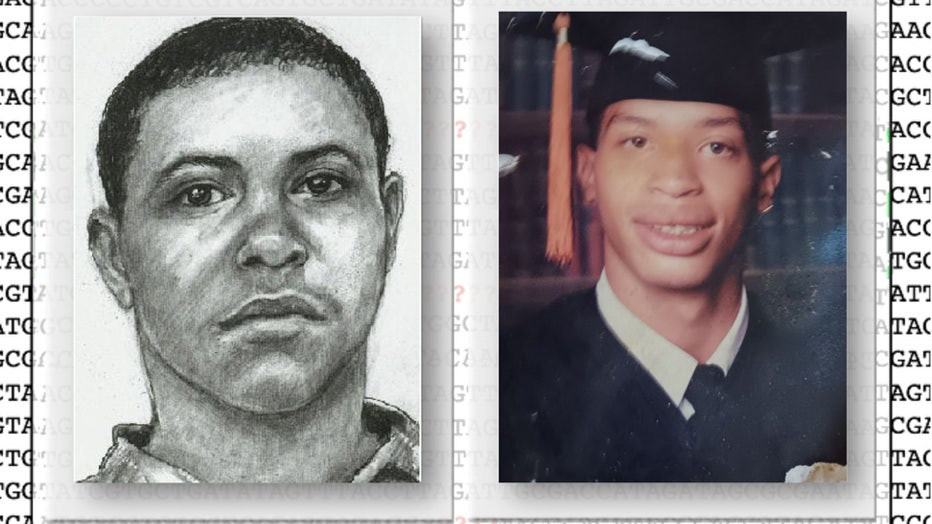In a remarkable breakthrough after nearly three decades of mystery, the identity of a man known only as “Fulton County John Doe” has been finally revealed. Thanks to the tireless efforts of the DNA Doe Project and advancements in investigative genetic genealogy, the man brutally murdered in Atlanta in 1996 has been identified as David Brown. This development brings a measure of closure to a chilling cold case that has haunted Fulton County for years, though the perpetrator of the heinous crime remains at large.
The tragic story of David Brown unfolded in southeast Atlanta in 1996 when he was the victim of a violent attack. Found severely burned on Lansing Street, Brown, despite his critical condition, managed to communicate to bystanders that he had been targeted in a robbery, doused with kerosene, and set on fire. Neighbors bravely attempted to extinguish the flames, and emergency services rushed him to the hospital, but his injuries were too severe. The burns were so extensive that traditional identification methods like fingerprinting were impossible, and tragically, Brown carried no identification.
At the time, David Brown’s family had reported him missing. However, the extent of his injuries rendered him unrecognizable even to his loved ones when they viewed the body. This heartbreaking circumstance led to the case going cold, and the unidentified victim became known simply as “Fulton County John Doe,” a stark reminder of the unsolved crime and the nameless victim.
The turning point in the “Fulton County John Doe” case came in October 2023. The Find Our Missing Facebook group, dedicated to bringing attention to missing persons cases, brought the decades-old mystery to the attention of the DNA Doe Project. This non-profit organization specializes in utilizing investigative genetic genealogy to identify unidentified remains. Collaborating with the Fulton County Medical Examiner’s Office, the DNA Doe Project obtained a preserved DNA sample from the remains of “Fulton County John Doe,” initiating a renewed investigation into the cold case.
Investigative genetic genealogy, the technique employed by the DNA Doe Project, is a sophisticated process that combines DNA analysis with extensive family tree research. By analyzing DNA samples and comparing them to publicly available genetic databases like GEDmatch and FamilyTreeDNA, genealogists can trace ancestral connections and build family trees, even when traditional records are scarce. This method proved particularly crucial in this case, as volunteer genetic genealogist Lance Daly explained, “The lack of records prior to 1870 makes African American genealogical research very challenging.” However, their persistence paid off when they discovered a 19th-century ancestor from Lincoln County, GA, who later moved to Atlanta, suggesting strong local family ties for “Fulton County John Doe.”
 David Brown, identified as Fulton County John Doe after 28 years thanks to DNA Doe Project
David Brown, identified as Fulton County John Doe after 28 years thanks to DNA Doe Project
Through months of meticulous work, volunteer genealogists painstakingly constructed family trees, eventually establishing a link between “Fulton County John Doe” and David Brown’s living relatives. A DNA sample from Brown’s family members definitively confirmed the match, bringing an end to the 28-year-long mystery surrounding the identity of the “Fulton County John Doe.”
Rebecca Somerhalder, team co-leader at the DNA Doe Project, expressed both pride and sorrow at the resolution of the case. “We are proud to have been able to finally identify him after so many years,” she stated. She also highlighted the emotional impact of such cases, particularly this one occurring so close to home. “It’s a bittersweet moment…this person died so horrifically, but now this person has his name back,” Somerhalder reflected.
While the identification of David Brown as the “Fulton County John Doe” marks a significant step forward, the investigation into his murder remains open and active. The perpetrator who committed this brutal act has yet to be brought to justice. The DNA Doe Project emphasizes the critical role of public participation in their work, relying heavily on individuals voluntarily sharing their DNA data on platforms like GEDmatch. As Somerhalder explained, “We absolutely rely on people being willing to upload their matches to GEDmatch… and then we can see those matches to do our work.” For those willing to contribute to solving cold cases like that of The Fulton County John Doe, sharing DNA data can be done at gedmatch.com.
The successful identification of David Brown underscores the power of genetic genealogy in bringing resolution to cold cases and providing answers for families who have long endured uncertainty. To learn more about the impactful work of the DNA Doe Project, visit https://dnadoeproject.org/. The journey to justice for David Brown continues, and the hope remains that his identification will bring renewed attention to the case and ultimately lead to the apprehension of his killer.
